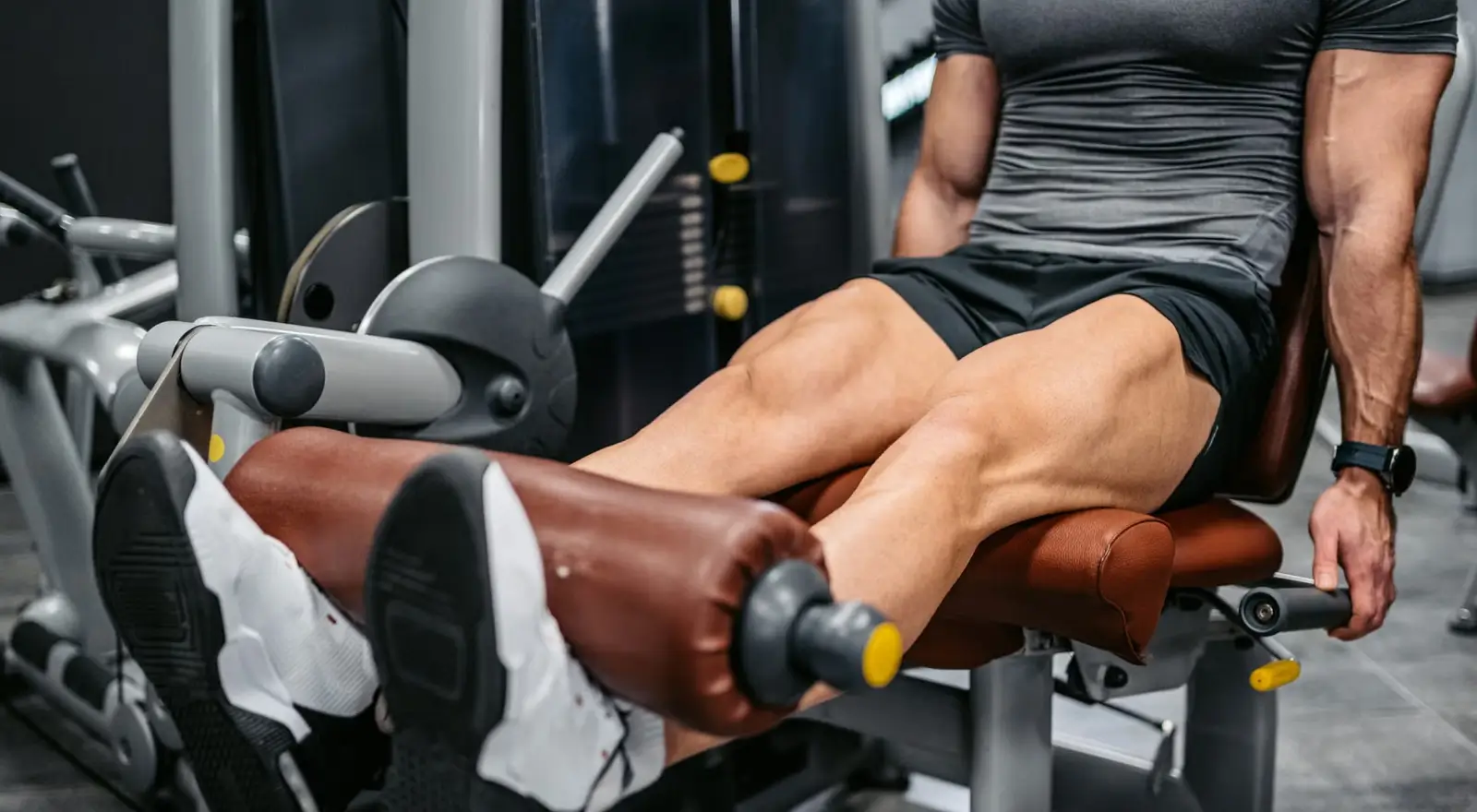Few things divide opinion as much as leg day. For some, it’s the pinnacle of a productive workout, while for others, it’s a source of dread. But skipping leg days isn’t wise, given how crucial your legs are in almost all physical activities, where strength and conditioning are essential.
“Everything starts at the ground, moving from your ankles, knees, and hips to your upper body,” advises Ben Boudro, owner of Michigan-based Xceleration Sports (via Stack). “Your legs are your foundation. The stronger your foundation, the stronger and faster you will be in your skills.”
While regular leg workouts are vital, enthusiasm can sometimes lead to overdoing it. So, can you overwork your legs? And what happens if you work them out every day? At NCPIC, we’re diving into the potential consequences of daily leg workouts, so join us as we explore the details.
Your bones may get stronger
Working out your legs daily can strengthen not just your muscles, but also your bones.
Strength-based leg workouts can reduce bone cell loss and decrease the risk of osteoporosis, says physical therapist Chantal Donnelly (via Everyday Health). By stressing your bones during exercise, you encourage your body to produce more bone cells, which strengthens them and helps prevent injuries. Regular resistance training can improve bone density by about 1% per year, according to Felicia Cosman, medical director at Helen Hayes Hospital’s Clinical Research Center and spokeswoman for the National Osteoporosis Foundation.
However, if you already have osteoporosis, intense daily workouts might not be advisable. While it’s important to maintain regular physical activity, those with osteoporosis should limit muscle strengthening sessions to 2-3 times a week on non-consecutive days (per the Royal Osteoporosis Society). Always consult your doctor before starting a new exercise regime, especially if you plan to work out daily.
Working out your legs every day will stimulate hormone release
Although we often associate hormones with certain life stages, they’re constantly at work in our bodies, regulating mood, appetite, and sexual function (via Everyday Health). Their balance can be influenced by daily behaviors and lifestyle factors, including exercise.
Exercises involving the legs can trigger the release of larger amounts of certain hormones, according to Healthline. Among these are testosterone, which aids in muscle building and repair, and human growth hormone (HGH), which helps muscles grow stronger and boosts metabolism and immunity. Cortisol, the stress hormone, helps manage stress response and regulate sleep cycles and blood pressure, per WebMD.
Leg workouts can help support other exercises
Leg workouts will, unsurprisingly, strengthen your legs. But this strength benefits more than just your calves and hamstrings; it can enhance other exercises you perform.
This is especially beneficial for runners, as MedicineNet suggests. Resistance exercises can fortify your hips, reducing the risk of hip injuries common among runners due to the stress the exercise places on the area (per Healthline). Building leg strength has also been shown to enhance athletic performance by increasing the capacity to generate power from the lower body. Beyond exercise, stronger legs assist in daily activities, from carrying groceries to moving house. While strong arms are important, never underestimate the role of strong legs and glutes in everyday tasks.
Your legs will get stronger if you work them out every day
It’s quite obvious: working out your legs every day will make them stronger. By challenging and overloading your muscles, you cause muscle fibers to break down (per Medical News Today). Your body then repairs these muscles, using hormones released during exercise, making them larger and stronger.
If you’re looking to elevate your leg workouts, keep them challenging and intense, advises 2014 Mr. Universe Calum von Moger (via Bodybuilding.com). Ensure full range of motion during exercises. “Full range of movement is best because it hits the whole muscle. If you’re doing half reps, you’re not working the muscle completely,” von Moger explains. While new exercises can be tempting, von Moger suggests that classic squats are hard to beat for overall gains.
Leg workouts can improve heart health
Strength-based exercises often show results in our physical appearance. However, working out your legs every day won’t just improve aesthetics; it can also benefit your cardiovascular system and lower the risk of heart-related health issues, like heart attacks or strokes, as well as death from cardiovascular conditions, according to a study from Iowa State University published in Medicine and Science in Sports and Exercise. The study is notable for examining the benefits of strength training independent of aerobic exercises, which are commonly associated with heart health.
Interestingly, the study found that even minimal strength training could reduce the risk of heart-related conditions. “People may think they need to spend a lot of time lifting weights, but just two sets of bench presses that take less than 5 minutes could be effective,” said Duck-chul Lee, associate professor of kinesiology at Iowa State and study author (via Science Daily). However, the study noted that performing resistance training more than four times a week did not yield additional heart health benefits.
Working out your legs can help support joint health
There’s a misconception that exercise can harm joint health, but strength training, especially for the legs, can actually support and strengthen joints. “Any type of exercise can be used to build and maintain joint health,” advises A. Lynn Millar, professor of physical therapy at Winston-Salem State University (via WebMD). Focusing on leg exercises will help keep your joints supported and healthy by increasing muscle strength.
Orthopedic surgeon Mufaddal Gombera notes that joint pain during workouts may not stem from the joints themselves, but rather from improper form or excessive weight, which can stress the joints. It’s important to maintain proper form, not overload on weight, listen to your body, stretch before workouts, and allow adequate rest between sessions to prevent joint pain and injury.
Leg workouts can help to lower your cholesterol
With approximately 94 million American adults having high cholesterol, and over a third of these having levels above 240mg/dL (per the CDC), making lifestyle changes to reduce cholesterol is a wise choice. Working out your legs daily could positively impact cholesterol levels, as WebMD explains. Weight training could improve both total and LDL cholesterol levels.
To achieve the most benefits regarding cholesterol levels, moderate-to-high intensity workouts are recommended. It’s also important to incorporate aerobic training, which positively affects HDL cholesterol and triglyceride levels. Combining weight training with aerobic exercise can provide comprehensive benefits.
Working out your legs every day can lead to overtraining
While regular leg workouts will undoubtedly strengthen your lower body, doing them every day could lead to diminishing returns and even new problems if you’re not careful.
Overtraining can manifest as more than just typical post-workout tiredness and soreness, according to the Hospital for Special Surgery. Signs include intense muscular pain, difficulty maintaining usual training standards, and prolonged recovery times. Additionally, you might experience insomnia, increased stress or anxiety, and reduced motivation.
If you recognize signs of overtraining, it’s crucial to adjust your routine. Certified strength and conditioning specialist and Soho Strength Lab trainer Kristy Zurmuhlen advises against daily leg workouts. “I like to leave two days between leg workouts,” says Zurmuhlen, “to ensure that my clients are recovering properly and not overtraining.” (per Women’s Health Magazine).
Daily leg exercise can help to improve balance
Our body’s balance system, or vestibular system, relies on various factors, including our eyes, joints, muscles, and inner ear organs, to maintain stability (per VeDA). Strengthening your legs can enhance this system’s function.
Unilateral exercises, which work one leg at a time, can particularly improve balance by challenging coordination through continuous muscular adjustments, as Oxygen notes. Begin with a single-legged lift and chop using a medicine ball, balancing on one leg while moving the ball. Progress to single-legged squats, which require control at the knee, hip, and ankle. Eventually, you can try single-legged squat jumps for maximum balance training. (We might need to master two-legged squat jumps first, though.)
Leg workouts can help with your circulation
While cardiovascular workouts are known for improving circulation, don’t overlook strength training. Resistance exercises, especially for leg muscles, may also enhance circulation, according to a study in The Journal of Strength and Conditioning Research. The study found that compared to aerobic exercises, resistance training provided greater blood flow to the limbs, possibly due to increased blood flow in the targeted muscles.
Though strength training shouldn’t replace cardio for circulation benefits (cardio offers additional advantages), lead study author Scott Collier suggests resistance workouts “could be implemented as a companion to an aerobic training regimen” (per Medical News Today). To focus strength workouts on circulation, leg extensions and hamstring curls are beneficial and can be done at your desk, suggests Vein and Body Specialists.
Leg workouts every day could improve your sleep quality
Regular exercise can lead to unexpected benefits, including improved sleep quality.
While aerobic exercise is known to enhance sleep, a 2020 study in Preventive Medicine Reports found that muscle-strengthening exercises also positively affect sleep. However, the study relied on self-reported strength training, indicating potential inaccuracies.
Nevertheless, leg workouts can aid sleep by creating a “bigger surge of adenosine” compared to aerobic exercise, says “The Sleep Solution” author and Charlottesville Neurology and Sleep Medicine president W. Chris Winter to Runner’s World. Adenosine production from resistance exercises promotes drowsiness, contributing to better sleep. Additional factors like lower blood pressure, higher metabolism, and reduced anxiety – results of strength training – also support improved sleep.
Working out your legs every day will benefit other parts of your body
Leg workouts don’t just benefit your legs. The advantages extend to other body parts through the engagement of various muscles, leading to positive effects. For instance, your core benefits from unilateral exercises, which target one leg at a time, says Healthline.
Unilateral exercises are also beneficial for injury recovery. Activating one side of the body indirectly stimulates the other side (per the American Council on Exercise). This stimulation helps strengthen the inactive side without directly working out the area, ideal for rehabilitating injuries on one side. Remember, to benefit a muscle on the inactive side, the corresponding muscle on the active side must be worked – a calf raise on your right side benefits your left calf, not your left hip.
Leg workouts every day can help protect your brain health
The mind-body connection is crucial, and working out your body offers mental benefits, including reduced anxiety and depression and improved information processing, says WebMD. Leg strength training, in particular, can maintain brain health and slow brain degeneration and related diseases, particularly in older individuals, according to a study in NeuroImage: Clinical.
The University of Sydney study examined the effects of six months of strength training on older adults at higher risk for Alzheimer’s disease. Up to a year after the program, the hippocampus (a brain area linked to memory and learning) showed added protection, as University of Sydney reports. Senior study author Michael Valenzuela emphasized, “The message is clear: resistance exercise needs to become a standard part of dementia risk-reduction strategies.”
Leg workouts can help reduce symptoms of stress and anxiety
If leg day stresses you out, you should know that regular leg workouts can actually help reduce stress. A study in Scientific Reports found that strength training can decrease anxiety and worry symptoms in young adults. Study co-author Brett Gordon told the New York Times that besides the endorphin release that boosts mood, resistance training enhances feelings of skill improvement and mastery, contributing to positive self-esteem.
However, the situation isn’t always straightforward. While strength training can reduce anxiety, overtraining might have the opposite effect. Excessive leg workouts can disrupt stress hormone levels and increase anxiety or stress, notes Healthline. Overtraining may also cause irritability, concentration difficulties, or lethargy.




